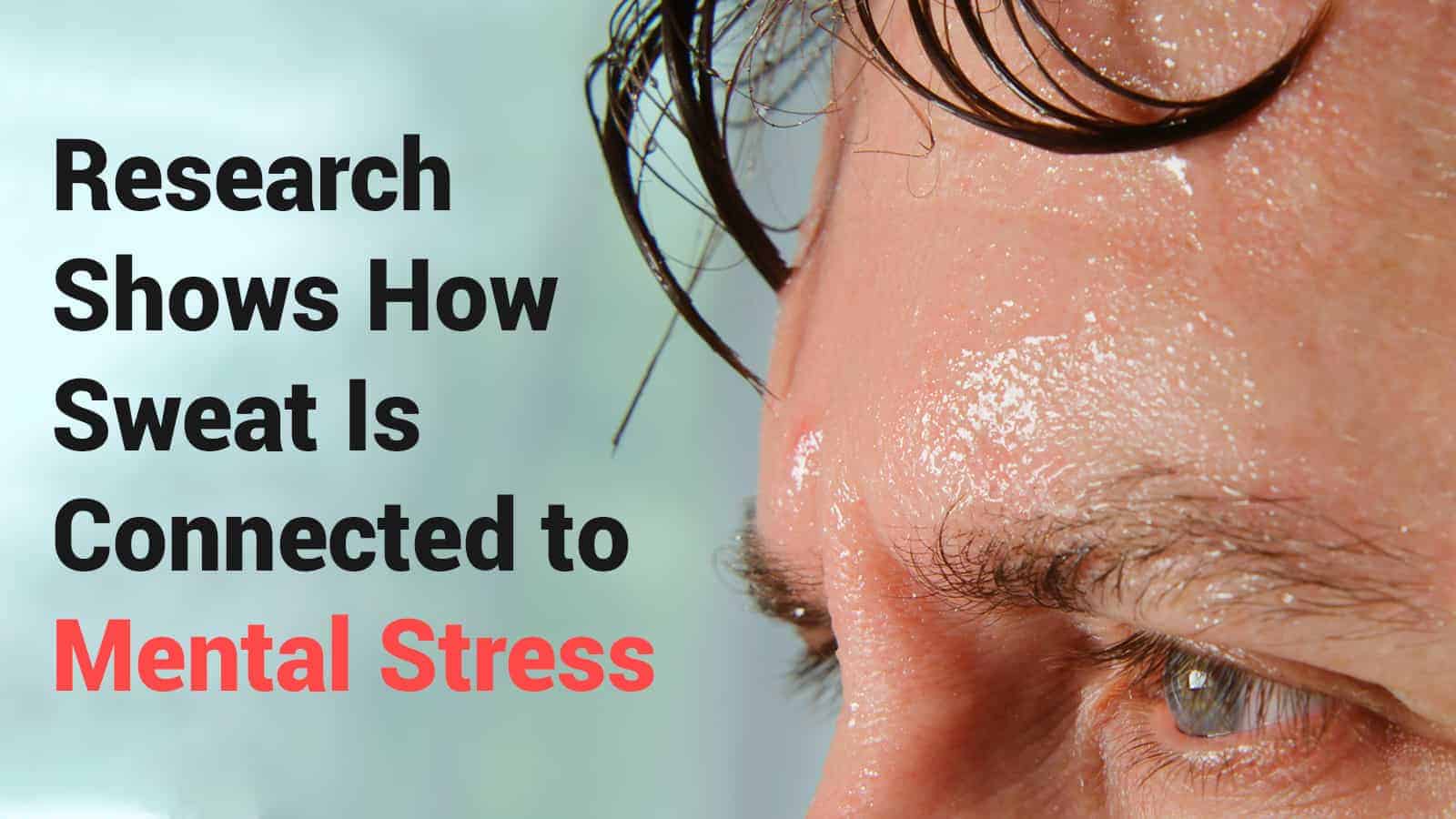Sweat doesn’t just keep our bodies cool – it can also reveal underlying mental stress. Engineers have recently developed a device that can measure cortisol levels in human sweat. The wearable system can help doctors better diagnose and treat stress-related conditions like burnout and obesity.
The groundbreaking research was published in the journal Communications Materials.
Until now, researchers and scientists haven’t been able to measure stress in a quantifiable way. However, the wearable sensor developed by engineers at EPFL’s Nanoelectronic Devices Laboratory (Nanolab) and Xsensio will change that. Patients can wear this device directly on their skin, and it will continually measure cortisol levels detected in their sweat. Cortisol, the primary stress biomarker, can become hazardous to human health if levels remain high over time.
It’s all in the cortisol.
Our adrenal glands produce cortisol, a steroid hormone, from cholesterol. The adrenocorticotropic hormone (ACTH), produced by the pituitary gland, regulates the secretion of cortisol. Cortisol helps with various bodily functions, like regulating metabolism, blood pressure, and blood sugar levels. It also impacts our immune system and cardiovascular health.
While cortisol is necessary for survival, it becomes a problem if levels stay elevated long-term. Cortisol spikes during life-threatening or stressful situations to prompt us to take action. However, in the world today, it usually works in overdrive, sending signals to our brains even when direct threats don’t exist. When this hormone floods our bodies, we naturally want to either run, freeze or fight the impending danger.“Cortisol can be secreted on impulse — you feel fine, and suddenly something happens that puts you under stress, and your body starts producing more of the hormone,” says Adrian Ionescu, head of Nanolab.
Cortisol production usually corresponds with our circadian rhythm, increasing in the morning and dropping off in the evening. However, in people with high levels of stress, these levels get disrupted.
“But in people who suffer from stress-related diseases, this circadian rhythm is completely thrown off,” says Ionescu. “And if the body makes too much or not enough cortisol, that can seriously damage an individual’s health, potentially leading to obesity, cardiovascular disease, depression or burnout.”
How the wearable device can detect cortisol in sweat
Blood tests can provide accurate information about a person’s cortisol levels. However, doctors also use sweat, urine, and saliva to measure stress hormones. The research team decided to take measurements using a person’s sweat, aided by the small wearable sensor they developed.
The device consists of a transistor and an electrode made from graphene, high sensitivity, and shallow detection limits. Aptamers, short fragments of single-stranded DNA or RNA which bind to specific compounds, make the graphene functional. The aptamer in the device carries a negative charge; it immediately captures the hormone when it detects cortisol.
This results in the strands folding onto themselves, carrying the charge closer to the electrode’s surface. The device then detects the charge and, therefore, can measure cortisol concentrations in a person’s sweat.
This is the first wearable device capable of detecting cortisol levels steadily throughout a person’s circadian cycle.
“That’s the key advantage and innovative feature of our device. Because it can be worn, scientists can collect quantitative, objective data on certain stress-related diseases. And they can do so in a non-invasive, precise and instantaneous manner over the full range of cortisol concentrations in human sweat,” says Ionescu.
Next steps for the pioneering invention which links sweat to mental stress
The engineering team tested their system on Xsensio’s proprietary Lab-on-SkinTM platform. Next, they will give it to healthcare workers to try out on patients. Esmeralda Megally, CEO of Xsensio, said: “The joint R&D team at EPFL and Xsensio reached an important R&D milestone in the detection of the cortisol hormone. We look forward to testing this new sensor in a hospital setting and unlocking new insight into how our body works.”
The team set up a bridge project with Prof. Nelly Pitteloud, chief of endocrinology, diabetes, and metabolism at the Lausanne University Hospital (CHUV). Her staff will get to test the wearable cortisol-monitoring device on human patients.
The trials will include healthy individuals and people suffering from Cushing’s syndrome, Addison’s disease, and stress-related obesity. Cushing’s syndrome occurs when the body produces too much cortisol; Addison’s disease is when the body underproduces cortisol. The engineers believe their device will greatly enhance understanding of the link between physiological stress and cortisol secretion.
The link between sweat mental stress
They also believe that the system can provide greater insight into how mental stress affects cortisol production.
“For now, they are assessed based only on patients’ perceptions and states of mind, which are often subjective,” says Ionescu. “So having a reliable, wearable system can help doctors objectively quantify whether a patient is suffering from depression or burnout, for example, and whether their treatment is effective. What’s more, doctors would have that information in real-time. That would mark a major step forward in the understanding of these diseases.”
In the future, the team hopes their technology will become mainstream, helping people track stress levels in real-time.
”The next phase will focus on product development to turn this exciting invention into a key part of our Lab-on-SkinTM sensing platform and bring stress monitoring to next-generation wearables,” says Megally.
Final thoughts: new invention by engineers tracks cortisol levels in human sweat
Before the engineers from Nanolab created this revolutionary invention, doctors could not quantify stress levels. Now, they can accurately measure stress levels in patients’ sweat using the wearable device. The team showed how the system could detect stress in a person’s sweat, tracking their cortisol levels during their circadian cycle.
So far, they’ve tested their technology on Xsensio’s proprietary Lab-on-SkinTM platform. They’ve also given it to Lausanne University Hospital (CHUV) for staff to try on patients. The team hopes to integrate their technology with wearables, helping thousands track and control stress levels.
















 Community
Community

